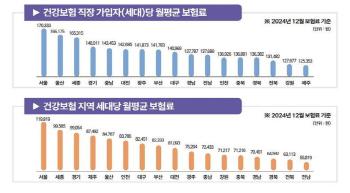Diabetes patients with coronary artery surgery reduce the risk of cardiovascular events by 22% when continuing aerobic exercise
Apr 17, 2025
|
Han Jung-kyu, a professor of circulatory technology at Seoul National University Hospital, said on the 17th that he analyzed the aerobic exercise habits and cardiovascular treatment results of coronary intervention patients suffering from diabetes.
Coronary artery disease is a disease in which the coronary arteries that supply blood to the heart are narrowed or blocked, and diabetes is a major factor in increasing the risk of the disease. Coronary intervention (PCI) is performed to widen narrowed blood vessels for treatment, and diabetics have a poor prognosis, such as easy re-strain even after the procedure. Continuous exercise is important to improve diabetes and cardiovascular disease, and according to the current guidelines, more than 150 minutes of moderate and high-intensity aerobic exercise per week for diabetics and more than 150 minutes of moderate and high-intensity exercise per week for cardiovascular patients.
Based on national health examination data, the research team classified 8225 diabetic patients who underwent coronary intervention between 2009 and 2012 into ▲ control group (exercise X → exercise X) ▲ start group (exercise X → exercise O) ▲ discontinued group (exercise O → exercise O) ▲ persistent group (exercise O → exercise O). After that, the propensity score weighting (IPW) model was applied to correct variables such as age, underlying diseases, and drugs, and followed up for an average of 4.9 years.
Comparing the risk of developing major cardiovascular events (MACE, overall death, myocardial infarction, reperfusion, heart failure), the aerobic exercise continuing group had a 22% reduced risk compared to the control group. The discontinued and started groups also decreased by 12% and 11%, respectively.
In addition, during excessive aerobic exercise, the beneficial effect of cardiovascular events by exercise decreased. Analysis of weekly exercise (MET) × exercise time (min) and treatment results showed that the risk of cardiovascular events was the lowest at 1000-1499 MET-min, and the J-curve type relationship increased again from 1500 MET-min or higher. '1500 MET-min or more' per week means moderate-intensity exercise (fast walking, tennis, etc.) for at least six hours per week, or high-intensity exercise for at least 3.5 hours (running, aerobics, hiking, etc.). In other words, if the exercise guidelines for patients with diabetes and cardiovascular disease are exceeded 1.5 to 2 times, the positive effect of aerobic exercise may be reduced.
The research team explained that excessive exercise for a long period of time may lead to a risk of hypoglycemia in diabetic patients, and may increase the risk of heart function decline or arrhythmia, myocardial infarction, and sudden death in coronary artery patients.
Professor Han Jeong-gyu "This study demonstrated for the first time based on a large population that diabetic patients who underwent coronary artery surgery can also improve their coronary artery disease treatment performance with steady exercise after the procedure."In particular, patients who newly started aerobic exercise after the procedure or those who stopped after the procedure also had a better prognosis than the control group who did not exercise at all, confirming the positive effect of aerobic exercise once again."
Meanwhile, the study was published in the recent issue of the `European Journal of Preventive Cardiology.'
|
This article was translated by Naver AI translator.















